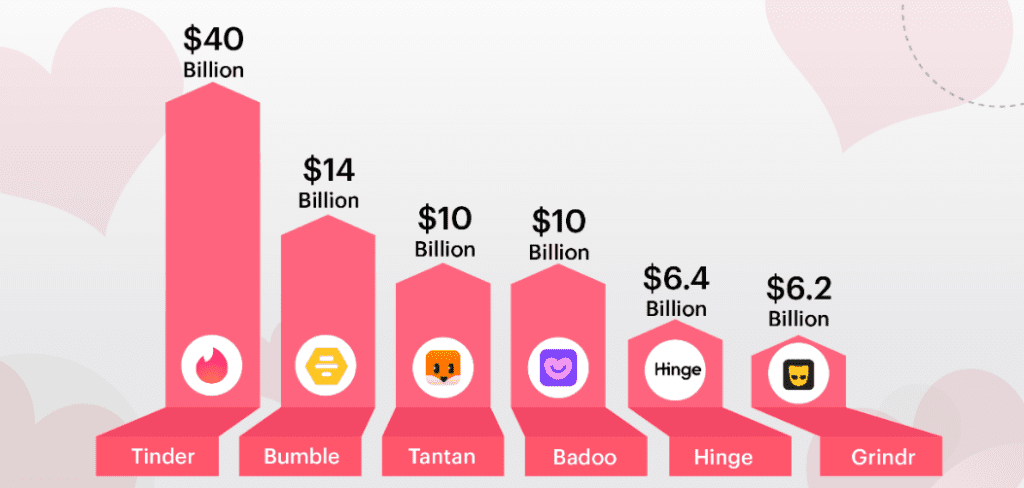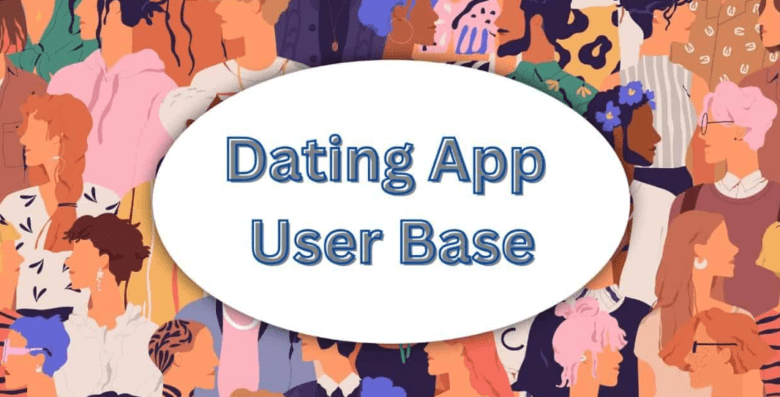Understanding the U.S. Dating App User Base: Demographics, Sociodemographic, and Personality Characteristics of Online Dating App Users
Online dating has revolutionized how people connect, turning smartphones into modern-day matchmakers. In the U.S. alone, millions of people use dating apps daily, making this an essential industry to understand. Whether you’re using popular platforms like Tinder or niche ones like Grindr, understanding the demographics and user behavior behind these platforms is critical. In this article, we will uncover the key insights behind online dating users, shedding light on what drives them, who they are, and how their behavior shapes the ever-evolving online dating market.
The Rise of Online Dating Apps in the U.S.
The online dating industry has experienced exponential growth in the past decade, becoming an integral part of the dating world. Dating apps like Tinder, Bumble, and Match.com are some of the most popular platforms for individuals to connect. The widespread use of dating apps has completely changed the way people form relationships, especially in the U.S., where the current use of dating apps is at an all time high.
More than 48.7 million Americans have tried online dating, and over 19% are actively using dating sites or apps to find a partner. These platforms have quickly moved from fringe technology to a mainstream way to meet new people, transforming the online dating landscape. With smartphones in almost every hand, using smartphone dating applications has become second nature for many.

The Phenomenon of Swiping
The feature that makes Tinder so popular is the swipe function, which has become synonymous with online dating apps. Users simply swipe right if they like a profile and left if they don’t. This gamified aspect of online dating has drawn in adults under 30, who use it to connect quickly and frequently. The swipe feature has been adopted by numerous other platforms, further embedding it into app usage habits.
Understanding Key Demographics of Online Dating App Users
Age Demographics in Online Dating
When examining the user base of online dating apps, age is a key factor. A significant portion of online dating users consists of adults under 30, with 53% of this age group having used a dating app. However, there has been a steady increase in older users as well. Those aged between 18 and 49 dominate app usage, but individuals over 50 are also embracing these platforms, particularly after COVID-19 limited traditional ways to meet people. By 2023, more than 20% of online daters were over the age of 50, proving that online dating isn’t just for the young.
Gender and Sexual Orientation in Online Dating
The demographic breakdown of online dating platforms shows that men use dating apps more frequently than women. On Tinder, for example, the user base is roughly 67% men and 33% women. This imbalance can often lead to different experiences for dating app users. Men tend to engage in swiping more often, while women tend to be more selective.
When it comes to sexual orientation, LGBTQ+ users, particularly lesbian and bisexual individuals, are also well-represented on dating platforms. Platforms like Grindr cater specifically to gay men, while HER and Tinder are popular among lesbian and bisexual women. Sexual orientation plays a significant role in the kind of dating apps users gravitate towards, as they look for safe spaces that cater to their needs.
Gender Breakdown by Platform Usage:
| Platform | % Male Users | % Female Users |
| Tinder | 67% | 33% |
| Bumble | 46% | 54% |
| Grindr | 90% | 10% |
| HER | 30% | 70% |
Behavioral Patterns of Online Dating Users
Casual Dating vs. Long Term Relationships
One of the most important aspects to consider is user intentions on these platforms. Not all online daters are looking for the same thing. While 44% of dating app users report using platforms to find a long term romantic relationship, about 40% are searching for casual dating or even casual sex. This diversity in intentions means that dating sites and apps need to cater to a broad spectrum of users. For example, Bumble encourages long term connections, while Tinder is often associated with more casual interactions.
Key Insights into User Intentions:
- 44% use dating apps for long term relationships
- 40% use dating apps for casual dating or casual sex
- Platforms like Tinder and Grindr are associated with casual interactions
- Bumble encourages long term connections
Swipe Behavior and Engagement
Engagement levels on dating platforms are high, particularly among younger users. Tinder users make over 4 billion swipes every day. The swipe feature has become a critical way of interacting with potential matches. However, not all dating users are equally engaged. Women often report feeling overwhelmed by the number of messages they receive, while men are more likely to feel discouraged by fewer responses. This discrepancy in user experience is something that dating platforms need to address to improve overall satisfaction.
Popular Dating Apps in the Market
Here is a list of the most popular dating apps and their user bases:
- Tinder: Over 80 million users globally
- Bumble: 50 million users, with a unique feature where women initiate conversations
- Grindr: 13 million active users, serving the gay, bisexual, and transgender community
- Hinge: Known for fostering long term relationships with its “Designed to Be Deleted” tagline

Geographic and Cultural Differences in the Online Dating Landscape
Geography significantly impacts the online dating scene. In the U.S., the online dating market generates more revenue than anywhere else, with a projected $1.43 billion by 2024. However, the popularity of online dating is not limited to the U.S. Countries like India and China are rapidly embracing these platforms, with cultural shifts influencing app usage across different regions.
Common Challenges Faced by Online Daters
Safety and Security Concerns
While online dating platforms offer numerous benefits, they are not without challenges. One of the most significant concerns among dating app users is safety. Sociodemographic and personality characteristics play a role in how individuals perceive the security of dating sites. Many users, particularly women, report unwanted messages, harassment, and even scams. 52% of online daters have encountered a scammer on a dating site or app. As a result, platforms are implementing stricter safety measures, such as background checks, to address these concerns.
Overwhelm and Fatigue in the Dating World
The abundance of options on online dating platforms can also lead to swipe fatigue, a phenomenon where users feel overwhelmed by the number of profiles and interactions. Women are more likely than men to report feeling swipe fatigue, especially when receiving a high volume of messages. On the other hand, men often feel insecure about the lack of responses, leading to discouragement and lower engagement.
The Role of Paid Features in Online Dating Apps
Premium features play an increasingly important role in the online dating market. Around 35% of dating app users have paid for additional features like extra swipes, enhanced profile visibility, or seeing who liked their dating profile. These features not only improve the user experience but also generate substantial revenue for dating platforms. Platforms like Match.com and eHarmony offer premium subscriptions that lead to better outcomes for those who are willing to invest in their search for a partner.
How Algorithms Shape User Behavior on Online Dating Sites
Dating algorithms have become a cornerstone of online dating platforms. These algorithms use data about user behavior, preferences, and demographics to match individuals. While dating app users often rely on these algorithms to find suitable matches, there’s skepticism about their effectiveness in predicting love. Only 21% of online daters believe that algorithms can successfully predict long-term compatibility. Despite this, these algorithms continue to play a pivotal role in shaping user experiences and influencing behavior on dating sites and apps.
Understanding the Modern Online Dating User Base
The online dating landscape is more diverse and dynamic than ever. From the dominance of younger adults to the growing presence of the LGBTQ+ community, the user base of dating apps spans a broad range of ages, backgrounds, and intentions. Whether people are looking for casual relationships or long-term partnerships, understanding these demographics and behaviors is key to navigating the online dating world. As challenges such as safety and swipe fatigue continue to affect user experiences, the future of online dating will depend on how well these platforms adapt to meet the evolving needs of their users.



